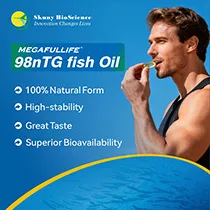Global trends in postbiotics market
Discover how major trends and consumer preferences in postbiotics are developing internationally

Postbiotics, defined by the International Scientific Association for Probiotics and Prebiotics (ISAPP) as a preparation of inanimate microorganisms and their components that provide health benefits, are gaining consumer attention in areas such as gut health and immunity. Unlike probiotics, postbiotics are stable and possess a longer shelf life.
Innova Market Insights’ Innova360 research into global postbiotics trends highlights consumer preferences, patent publications, and innovation opportunities.
Consumer preferences
Globally, 12% of consumers actively seek postbiotic ingredients in food and beverage products that support gut health alongside probiotics and prebiotics.
Postbiotics have grown at 57% CAGR over the past four years. However, research reveals that consumer awareness of postbiotics is still low.
Social media trends
Social media discussions around postbiotics show a 37% positive sentiment, with users emphasizing benefits like gut health, immunity, and overall well-being. News articles about postbiotics reach a broader audience than social media, highlighting the importance of prioritizing educational efforts.
Together, nutritionists and influencers help bridge the gap between postbiotics and consumers.
Women lead the market, with young millennials and boomers driving half of the conversation about postbiotics on the social media platform X, reflecting a growing interest in digestive health.
Top categories and claims
The postbiotics market has undergone fast growth in supplement launches while expanding to categories like soft drinks, dairy, bakery, snacks, and sports nutrition over the past four years.
Social media interactions on dairy postbiotics are high, while supplements reach a larger audience across online platforms and social media.
 Postbiotics grew 57% CAGR in the past four years, driven by stability and enhanced shelf life.The top supplement claims in postbiotic launches are digestive/liver, immune, and skin health. In contrast, food and beverage products often emphasize prebiotic and digestive health claims.
Postbiotics grew 57% CAGR in the past four years, driven by stability and enhanced shelf life.The top supplement claims in postbiotic launches are digestive/liver, immune, and skin health. In contrast, food and beverage products often emphasize prebiotic and digestive health claims.
Brands strategically introduce postbiotics using relatable and well-known ingredients to spark consumer interest. For instance, brands emphasize postbiotics in dairy consumption through familiar foods, including yogurt and smoothies.
Flavor trends
Postbiotics with refreshing natural flavors are gaining consumers’ interest. Notable flavors include jelly peach, picklesecco, ginger, lemongrass, and mint.
These flavors come with health benefits, like zero sugar, apple cider vinegar, which avoids bloating and evokes a nostalgic cultural feeling.
Patent trends
Postbiotic patents showed a 94% CAGR growth over the past four years. ISAPP’s recent definition of postbiotics has been pivotal to the rise of patents. Food companies, pharmaceuticals, and research firms are key players in postbiotic patent innovations.
The top publishers on postbiotics are ADM, Memorial Sloan Kettering Cancer Center, Chebigen, Nestlé, Fonterra Coop Group, Alfasigmaâ, Igen Biolab Group, Dong-A Pharm, Cristalfarma, and Beijing Scitop Bio Tech.
ADM’s patents involve the application of postbiotics in treating and preventing anxiety disorders. The company applies heat-treated non-viable postbiotics, including Bifidobacterium longum and Lactobacillus rhamnosus strains, in the treatment of anxiety disorders. Supplements dominate postbiotic product launches with claims for digestive, immune, and skin health.
Supplements dominate postbiotic product launches with claims for digestive, immune, and skin health.
Memorial Sloan Kettering Cancer Center patents focus on using postbiotics to reduce the risk of cancer relapse.
Patent publication and the integration of postbiotics in functional food and supplements come under five key topics: postbiotic composition, food products, postbiotic extracts, healthy functional foods, and bacterial strains.
What’s next in postbiotics?
Postbiotics are emerging as promising solutions in personalized health and nutrition. They complement probiotics and prebiotics and are vital components in advancing gut health, immunity, and overall wellness.
With AI and microbiome research, brands can create targeted postbiotic products for athletes seeking endurance, seniors focusing on vitality, or professionals managing stress.
Meal replacements enriched with postbiotics designed to support energy, digestion, or sleep can emerge as lifestyle staples. Combining postbiotics with synbiotics, adaptogens, and plant-based proteins can provide holistic mental and physical health support.
Postbiotic-infused beverages like kombucha, kefir, and plant-based alternatives can offer enhanced gut and immune benefits. Naturally fermented postbiotics sourced from whole foods and sustainable practices like upcycling food byproducts can appeal to eco-conscious consumers. These practices align with the increasing demand for clean and ethical products.
Brands’ continued efforts to educate consumers on postbiotics’ distinct advantages, including their stability and direct benefits, can encourage broader adoption in the future.
Meanwhile, collaboration between science, technology, and marketing will likely drive innovation and make postbiotic-based solutions more accessible.
This article is based on the Innova Market Insights report, “Trending in Postbiotics — Global.”












